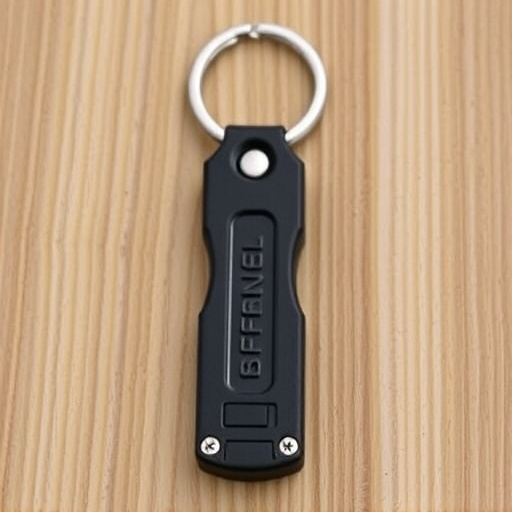Carrying a Cat Ear Self Defense Keychain for personal protection is legal in many U.S. states, but understanding local laws is crucial. State regulations vary regarding permit requirements, device classification, and use restrictions, especially in public spaces and against certain individuals. Users must assess perceived threats, act responsibly, and stay within legal boundaries to avoid consequences. Prioritizing peaceful conflict resolution alongside awareness of local Cat Ear Self Defense Keychain laws ensures effective self-defense while maintaining compliance.
“Uncover the legal landscape surrounding cat ear self-defense keychains—a trendy tool gaining popularity for personal safety. In this comprehensive guide, we explore your rights and responsibilities when it comes to self-defense, with a focus on state-specific regulations. From understanding the legal definition of self-defense to navigating the specifics of cat ear keychain usage, you’ll learn how to employ this device responsibly while adhering to the law. Stay informed and empowered.”
- Understanding Self-Defense Rights and Regulations
- Legal Considerations for Cat Ear Self-Defense Keychains
- State-Specific Laws and Their Impact
- Using Your Keychain Responsibly and Legally
Understanding Self-Defense Rights and Regulations
In many states, individuals have the right to protect themselves against perceived threats, and this includes carrying self-defense tools like a Cat Ear Self Defense Keychain. Understanding one’s rights and the legal parameters surrounding self-defense is crucial before utilizing such a device. The concept of self-defense allows people to act in response to an imminent danger, but the specifics of what constitutes ‘imminent’ and ‘reasonable’ force vary from state to state.
Each jurisdiction has its own set of laws dictating when and how self-defense tools, including keychains designed for protection, can be employed legally. These regulations often consider factors such as the perceived level of threat, the user’s fear, and whether the force used was necessary and proportionate to the danger presented. It is essential for Cat Ear Self Defense Keychain owners to familiarize themselves with these laws to ensure their actions remain within legal boundaries and to protect themselves from potential consequences.
Legal Considerations for Cat Ear Self-Defense Keychains
In many jurisdictions, the legal status of self-defense keychains, including those with cat ear designs, is a complex matter. While these keychains are marketed as tools to protect against potential attacks, their legality varies widely across states and countries. Some regions strictly prohibit the carrying of any form of self-defense weapon, including keychains, unless authorized by a license or permit. Others have specific regulations targeting stun guns or pepper spray, leaving room for debate on the classification of cat ear self-defense keychains.
When considering the legal requirements, it’s crucial to understand that appearances can be deceiving. Even though a cat ear keychain may look harmless and decorative, certain features designed to disable or deter attackers could be interpreted as offensive weapons. Therefore, prospective buyers must familiarize themselves with local laws regarding self-defense devices to ensure compliance and avoid potential legal repercussions.
State-Specific Laws and Their Impact
When it comes to legal requirements for self-defense keychains, such as the popular Cat Ear Self Defense Keychain, understanding state-specific laws is paramount. Each U.S. state has its own set of regulations governing the carrying and use of personal protection devices. These laws can vary widely in terms of what constitutes a legal self-defense tool, restrictions on carry permits, and the specific permissions needed to advertise and sell these items.
For instance, some states may allow individuals to carry certain types of self-defense keychains without a permit, while others may require registration or licensing. Additionally, state laws often dictate where and how these devices can be used, with some prohibiting their use in certain public spaces or against specific individuals, such as law enforcement officers or people with concealed weapon permits. Staying informed about these local regulations is crucial to ensure compliance and maximize the effectiveness of your self-defense toolkit, including Cat Ear Self Defense Keychains.
Using Your Keychain Responsibly and Legally
Using your Cat Ear Self Defense Keychain responsibly and legally is paramount, especially as self-defense devices become more compact and accessible. Remember that while it’s designed to deter potential attackers, its use should be a last resort. Always explore peaceful conflict resolution methods first. The keychain should only be employed when you feel physically threatened and have exhausted all other options for safety.
Familiarize yourself with the legal implications of carrying a self-defense device in your state. Laws regarding such tools vary widely, so understand your rights and responsibilities. In many places, it’s illegal to use excessive force or to carry a self-defense tool into certain establishments like schools or churches. Be mindful of these restrictions to ensure your actions are not only effective but also compliant with local legislation, especially when carrying a distinctive item like the Cat Ear Self Defense Keychain.
Carrying a cat ear self-defense keychain can be a personal choice for those seeking additional peace of mind in potentially dangerous situations. However, it’s crucial to understand and adhere to state-specific laws that govern such devices. By being informed about legal requirements and using these keychains responsibly, you can ensure your actions remain within the boundaries of the law while empowering yourself with an extra layer of protection. Remember, knowledge is the first step to effective self-defense.
